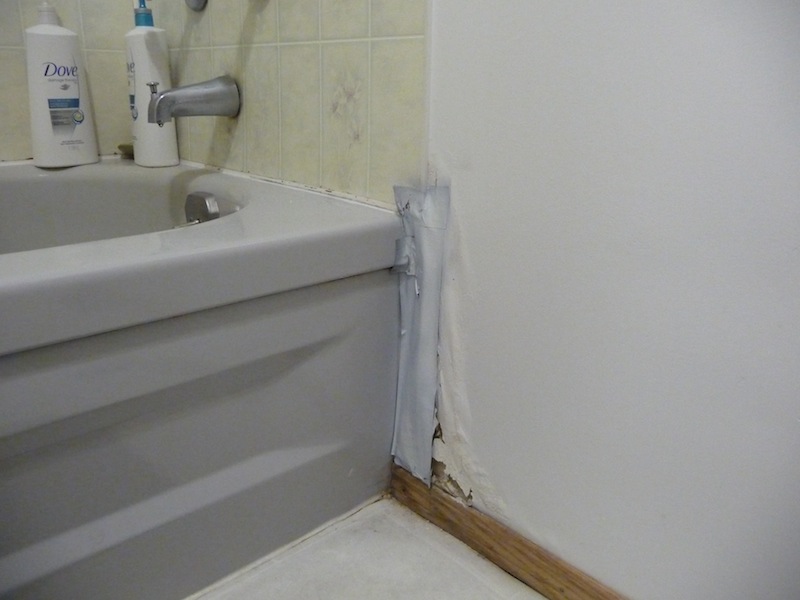We've uncovered this article pertaining to Common Causes of Water Damage in a Bathroom directly below on the internet and felt it made good sense to share it with you on my blog.

The bathroom is extremely prone for damp accumulation and possible water damage due to the regular use of water in it. This article uses easy assessment methods to help identifying water damage hazards.
The constant use of water in the washroom makes it very vulnerable for wet accumulation and also prospective water damages. By checking it routinely, you can lower water associated damages.
The complying with set of assessments is easy to execute and must be done once in every 3 months in order to keep your shower room in good shape as well as to prevent potential water problems caused by the bath tub, the shower, pipe joints and plumbing, sinks, closets, and the commode
Do not overlook executing these evaluations and also be complete while performing them. Remember that these easy examinations can save you a great deal of money by giving early signs for water damage
Bath tub as well as Shower
The shower and also bathtub call for special focus and upkeep. Check the floor tiles and change if cracked. Ensure that there is no missing out on grout in between the floor tiles. Examine and also replace split caulking at joints where the walls meet the flooring or the bathtub. Blocked drains pipes and pipelines troubles will certainly avoid the bath tub from drying as well as might indicate major troubles beneath the tub. Seek advice from a professional promptly to stop structural damage. Focus on stainings or soft areas around the bath tub walls as they may show an internal leakage.
Plumbing
Signs for water damages are hard to find since most pipes are set up inside the wall surfaces.
Pay unique focus to flooring and walls wetness and also discolorations as they may indicate an undetectable plumbing trouble. Examine dampness levels in adjoining spaces also.
Sinks as well as Cabinets
Sinks and also closets are revealed to moisture and humidity everyday and are frequently neglected. Examine routinely under the sink and on the countertop above it. Repair any kind of drip in the catch as it might recommend drainpipe issues. Take a look around the sink, sluggish draining pipes may show an obstructed drainpipe. Replace sink seals if they are broken or loose.
The Bathroom
The toilet is a susceptible water joint. Examine the water lines as well as look for leaks around the bathroom seat, in the hose pipe, and under the water container. If you detect any kind of indicators of dampness on the flooring around the bathroom, check for leaks in the toilet edge as well as tank seals.
Be aware that hanging bathroom bowl antiperspirants enhances the chances for obstructions.
TIPS TO PREVENT WATER DAMAGE IN THE BATHROOM
The average household uses approximately 80-100 gallons of water per person per day. For a family of 4, that's almost 2,500 gallons of water a week! The largest portion of this consumption comes from bathroom use. Flushing the toilet uses the most water, followed by taking a shower or bath. With that much water running through the home, water damage in the bathroom is bound to happen. Knowing how to spot signs of a water leak is essential to preventing long-term damage. This guide provides you with tips to reduce the impact of water damage on your bathroom.
CAUSES OF BATHROOM WATER DAMAGE
Pipe breaks are the most common cause of water damage we see in our daily jobs. The age of a pipe plays a large role in a pipe break as well as corrosion. Over time, the metal begins to break down, allowing water to escape. Frozen pipe breaks are also a concern in the winter months. Toilet overflows caused by paper products or children flushing inappropriate items. Degraded caulking around the toilet or bathtub can allow water seepage, sometimes behind the fixture, into the subfloor or walls. Condensation forms when the water in a pipe is cooler than the air temperature. Beads of water form on the exterior of the pipes, sometimes so much so that the water begins to drip and pool below. Sink or shower backups created by poor drainage. HOW TO PREVENT WATER DAMAGE IN YOUR BATHROOM
Inspect your toilet supply line for worn or frayed hoses and replace them as needed. Winterize your plumbing to prevent a frozen pipe break. Use vent fans to prevent condensation that can lead to mold growth. Routinely check and replace degraded caulking around your toilet or bathtub. Increase the temperature in your toilet tank and insulate your pipes during the warm summer months to keep condensation from forming. Use child safety locks on the toilets. Flush only toilet paper. "Flushable" wet wipes are actually not good for your plumbing system. Additionally, feminine hygiene products should not be flushed. Prevent water from escaping the tub or shower. Make sure shower curtains are in good condition. Inspect shower doors and replace the seal strip if necessary. Wipe up any water that accumulates on the floor and use bath mats. Water left to sit can cause damage to the tiles and flooring. Refrain from using bath products containing heavy oils to avoid a clogged drain.

I'm certainly very curious about Looking for Signs of Water Damage in the Bathroom and I'm hoping you liked the entire blog post. Sharing is nice. You won't know, you will be helping someone out. Thank you so much for taking the time to read it.
Schedule A Free Estimate
 Tony Danza Then & Now!
Tony Danza Then & Now! Alisan Porter Then & Now!
Alisan Porter Then & Now! Seth Green Then & Now!
Seth Green Then & Now! Gia Lopez Then & Now!
Gia Lopez Then & Now! Dawn Wells Then & Now!
Dawn Wells Then & Now!